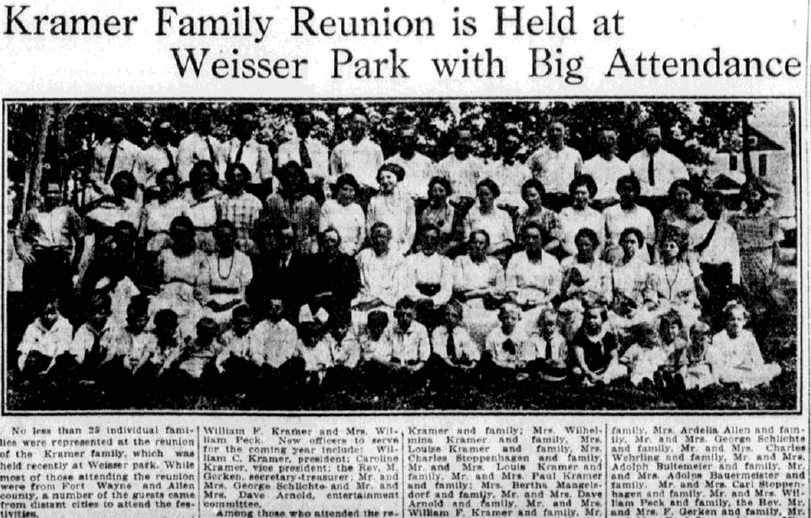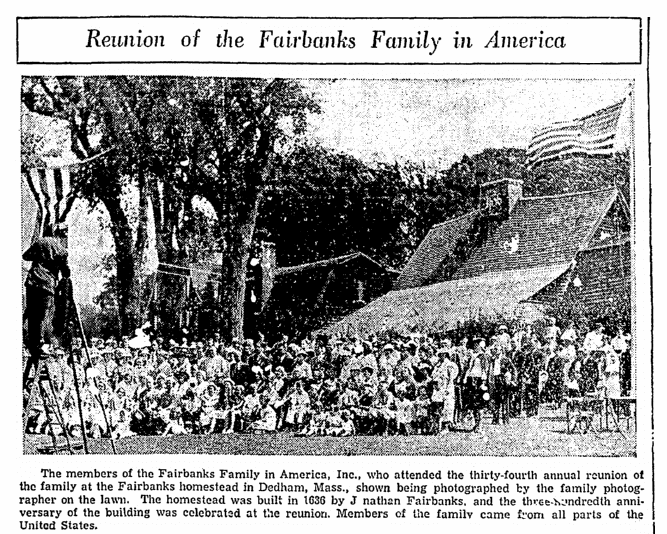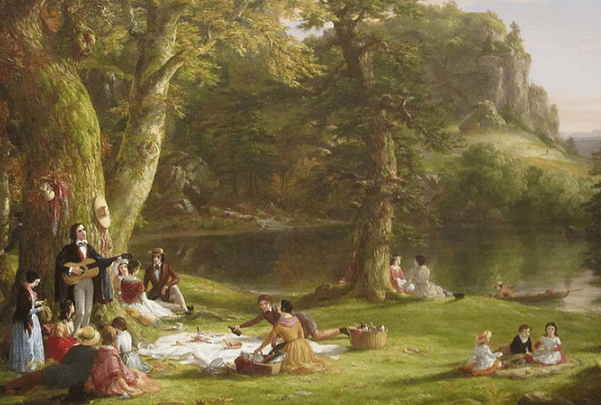Introduction: In this article, Gena Philibert-Ortega shows how reunion articles in old newspapers can help you fill in some spaces on your family tree. Gena is a genealogist and author of the book “From the Family Kitchen.”
Have you attended a family reunion this year? I did and it provided me with the opportunity to add to my genealogy by interviewing family members, obtaining copies of old photos, meeting cousins, and visiting historic family sites. And of course there were a few side trips to cemeteries!
Family reunions of old made for great newspaper articles in our ancestors’ hometown papers. These articles are filled with family names, ages, relationships, and photos. They provide us with much-needed clues that can assist in our genealogy research.
Never thought about looking for a newspaper article about a family reunion? It’s usually not the first thing on our mind when we search through old newspapers, but these reunion articles can be a gold mine for family historians. Consider some of the following examples.
Family Reunion Photos
Family reunion newspaper articles may include a lot more than rich genealogical data – they can also include a photo. If you’re really lucky that image might be a large group photo like this example from the 1922 Kramer reunion in Allen County, Indiana. The photo caption states that it was attended by “no less than 25 individual families.” Family names and reunion committee members are listed.

I especially like this next example, a “behind the scenes” group photo that not only shows the photographer but the homestead. This was the 34th annual reunion of the Fairbanks family – and the 300th anniversary of the homestead located in Dedham, Massachusetts.

While you may not find a group photograph of your ancestors’ reunion, there may be one of individual family members. Such is the case for this 1921 reunion photo of the De Mott family in Michigan. Theodore S. De Mott and his wife were the oldest representatives of the family in attendance. Mrs. Mott was 80 and her husband was 79 years old. According to the article, the oldest member of the family, Mary De Mott, was 96 years old but unable to leave her home for this fifth annual reunion.
Names and More Names
What’s a family reunion article bound to have? Well obviously the 5 W’s of journalism: who, what, where, when, and why – and luckily for us genealogists, the “who” means the names and residences of family members. In this 1906 example from Springfield, Massachusetts, the list of attendees includes married couples, single women, and bachelors. In addition to the names, we are told that the youngest person attending was 10-year-old Norman Lewis Pomeroy, and the oldest, at 85 years of age, was the hostess Mrs. Almon W. Higgins.
1,000 or 6, They’re All Family
Some family reunion newspaper articles seem to boast about how many family members attended. But it’s important to remember that the term “family reunion” doesn’t just mean a gathering of a large number of people. In some cases, the reunion might be a very small affair with just one family unit – but these reunions are equally important.
Such is the case of this 1915 reunion, when four brothers and two sisters from the Perin family gathered – the first time all six had been together in 53 years. The last time the family had been together was when two of the brothers enlisted in the Civil War. During the war, the remainder of the family headed west to settle in Oregon. After the war, only one brother remained in Iowa. The reunion was his first trip west.
Reunions can also be combined with a special family event like a milestone birthday or anniversary. Search on the names of ancestors who lived long lives for these types of family gatherings. In this example from Georgia, Matthew Sharpe was celebrating his 92nd birthday – which was the perfect time to throw a family reunion that included great-grandchildren. Other family details found in the article are his former and current wives’ names, as well as his siblings’ names and ages.
Did your ancestors hold a large family reunion, so big that special accommodations had to be secured? In those cases, the reunion may have even made news in several states, like this report of a reunion in Utah of the descendants of Mormon leader Brigham Young. It was first published in a New York newspaper and then reprinted in a Texas newspaper. As this 1902 newspaper article reports, “…1,000 descendants of a man who has died since the Civil War” were expected to be in attendance. The reunion was moved to an outdoor venue since no Salt Lake City building could accommodate the large crowd.
Calling Together the Lewis Family
We tend to think of a family reunion as an event that gathers descendants of a particular ancestor. In some cases, a family reunion may not be limited to just one branch of a family. Some reunions gather all those who share a surname, as in this reunion of the Lewis family – most, but not all, of whom were ancestors of the famous explorer Meriwether Lewis. This 1904 newspaper article reports on the Lewis family reunion at the 1904 World’s Fair in St. Louis:
Lewis societies have been organized in nearly all the states of the Union, for the purpose of having a family reunion on Lewis day, which has been officially designated by the World’s Fair authorities, upon September 23. Already over eight thousand Lewises have been enrolled on the family roster, and it is expected that by September more than twelve thousand will be enrolled.
Another “Lewis Day” family reunion was held the next year, as this 1905 newspaper article reports.
Time to Document Those Family Reunions
Did your ancestors attend a family reunion? It’s quite possible they did, and those events may have made the newspaper. By searching on your family surnames as well as the names of much older ancestors, you may be able to find articles that document these events and the family members in attendance, perhaps helping to fill in some spaces on your family tree.
Start searching for family reunion articles today, in a collection such as GenealogyBank’s Historical Newspaper Archives. You never know what you might find!
Related Articles:
